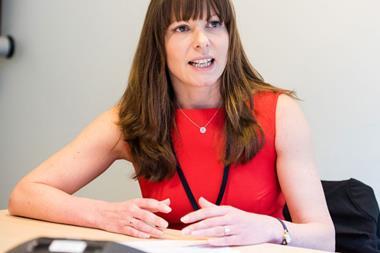Insurance Times’ head of research, Savan Shah speaks to head of SME of QBE, David Greaves on the developments of ”QBE Fastflow” since last year’s etrading survey

Head of SME of QBE, David Greaves
A year has passed since the Insurance Times 2018 etrading survey. What developments have occurred with QBE Fastflow that brokers should be aware of?
Use of QBE e-trade by brokers has continued to grow again this year, with requests for quotations increasing by around 35% - the fifth consecutive year of significant growth. This is down to a combination of more products, wider eligibility and brokers and underwriters continuing to adopt and see the benefits of electronic trading.
Following our earlier e-trade firsts like PI Combined and Contractors Combined, QBE was also the first to market with a CyberCrime offering, which is now available on both Acturis and the FastFlow extranet.
In addition, we have widened our distribution by adding Office, Commercial Combined and Mini Fleet products to Open GI, with plans to roll out further products in the future. Mini fleet has also been made available to brokers on Applied, complementing our Office and Commercial Combined offerings. Again, we have plans to launch further products through this distribution channel.
QBE is regarded as the market leader in Minibus insurance and we are still the only insurer with an e-trade Minibus product on Acturis and FastFlow. Our broker partners value the ‘Live Chat’ facility which we have introduced on Minibus and certain other Acturis products and we will be extending this out to our FastFlow extranet shortly.
And finally, we have made over 40 product, pricing and eligibility changes to provide our broker partners with an enhanced user experience.
Many brokers are expressing interest in data enrichment however some are unconvinced of the value. What is your view on data enrichment being more integrated into etrading systems reducing the time brokers have to spend collating customer information?
Data enrichment comes in many forms and insurers and brokers will see it deployed and used in differing ways. One way is assisting in pre or part completion of the quote request and proposal form thus cutting down the questions that are asked.
As some of the enrichment facilities scrape data that’s available in the public domain, additional information on the risk can be obtained and presented to underwriters which would lead to more accurate and relevant underwriting and pricing.
Brokers can still add value by supplementing what is declared on the proposal with data enriched by their in-depth knowledge of the customer.
Each year we explore the various trading routes brokers choose, whether it be through an insurer extranet platform or via a software house system. Do you think there is room for both routes of trading, or will one route prevail in the years ahead?
Insurer extranets remain a valid distribution channel for those brokers that do not subscribe to a broker management system and for those products that are niche and specialist in nature.
It is likely however that we will continue to see a reduction in the volume of transactions via insurer extranets for more commoditised products.
How do you reduce the pain points that could occur for brokers when trading larger or complex risks?
E-trade platforms can accommodate risks paying much more than £10k in premium although currently the industry averages are significantly less than this. Ultimately, it is down to both underwriter and broker preference, as opposed to system rules and capabilities.
What is crucial is that insurers have a good referral facility so that larger and more complex risks can start and finish in an e-trade environment with the backup of the ability to have a conversation with an underwriter where necessary. This facilitates all the cost-reduction and efficiency of an e-trade system with contract-certain documentation.
A theme we are exploring in this year’s Insurance Times Etrading survey is the future direction of etrading, what does the future of etrading hold in your opinion?
I believe we will continue to see more products with much wider distribution through multiple software houses and the continued deployment of products via insurer extranets.
We will continue to see enhancements in data science which will mean a better customer experience and better pricing and risk selection for insurers, with the inclusion of external data.
I think risks will increase in size and complexity. And more brokers will see the value of e-trade and adapt to this method of trading for small and medium risks.
Hosted by comedian and actor Tom Allen, 34 Gold, 23 Silver and 22 Bronze awards were handed out across an amazing 34 categories recognising brilliance and innovation right across the breadth of UK general insurance.




















































No comments yet